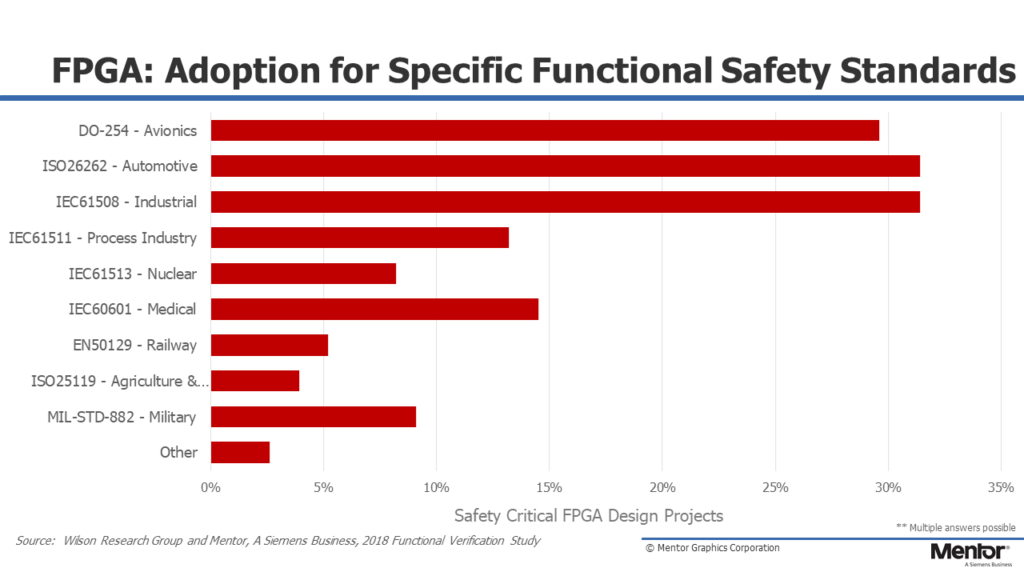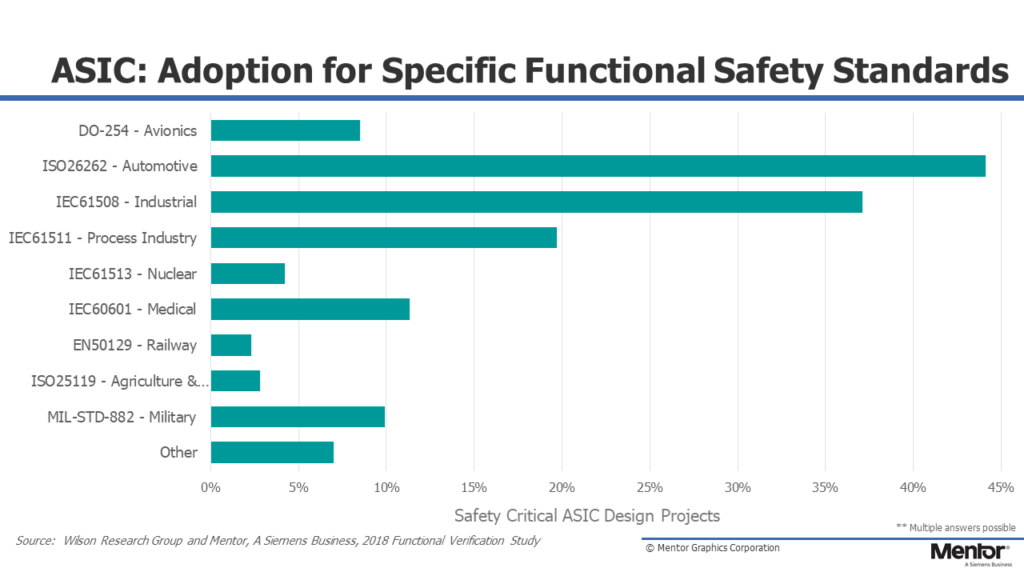Mastering Today’s Emerging Functional Safety Workflows
Last week the Verification Academy announced the new Introduction to ISO 26262 “Road vehicles – Functional safety” video course. And this week we continue our expansion into functional safety education by augmenting our Introduction to DO-254 “Design Assurance Guidance for Airborne Electronic Hardware” course with a new video session titled Planning for DO-254.
We are passionate about Functional Safety education at the Verification Academy for a number of reasons. For example, we know from customer experience that adhering to functional safety standards can significantly impact to cost (up to 4x) as projects mature their processes from ad hoc to a structural flow required to conform to a particular standard. And education is one key component of managing the cost of maturing these processes.
The 2018 Wilson Research Group Functional Verification Study found that fifty nine percent of ASIC projects and forty seven percent of FPGA projects are working under some type of functional safety standard (this represents design projects, not silicon volume). For those projects working under a safety-critical development process standard or guideline, the following figures show the specific breakdown for the various standards. Note that some projects are required to work under multiple safety standards or guidelines. For example, IEC61508 and IEC61511. The key point from this data is that this increasing number of new requirements associated with functional safety are just an additional component of growing verification complexity for many projects.

The core mission of every safety-critical standard is to ensure the absence of unreasonable risk due to malfunctioning systems resulting in damage to persons or property. These standards guide programs through risk analysis and Safety Integrity Level (SIL) determination, hardware and software development procedures, and the supporting confirmation measures required to pass certification. If not properly planned and managed, adhering to these standards can add a layer of complexity on to an already difficult development workflow, often resulting in unplanned time and resource overhead.
The DO-254 standard has been around for over 15 years and has been applied almost exclusively in the commercial Aerospace industry. Because it has been focused in a subset of the electronic hardware market, many engineers and companies have little to no knowledge of DO-254.
However, in recent years, the airplane manufacturers have sought to create or update aircraft with newer technology to make them more functional, efficient and safer. As a consequence of this initiative there are two challenges have come to the surface:
- Newer electronic components are being incorporated in airborne electronic hardware which were not used before. Consequently, a broader range electronic component vendors are being asked to provide or assist in documentation to support certification efforts.
- Engineering companies which design airborne electronic hardware are seeking to minimize cost and schedule of the development of hardware incorporating these electronic components with more functionality and more complexity. Some also incorporate new technologies. The desire is to use advanced verification languages as well as advanced verification tools which are already being used in the commercial industry to address this.
The purpose of our Introduction to DO-254 course is to provide engineers or technical leads with a basic understanding of the key concepts of DO-254. The hope is that with this information it will allow them to:
- Accurately assess the impact of how these challenges affect their ability to produce a hardware item that will meet criteria set forth in DO-254.
- Devise a solution to the challenges that will be compliant to guidance provided in DO-254.
Check out our expanding functional safety educational content out on the Verification Academy!
Comments
Leave a Reply
You must be logged in to post a comment.




Hello